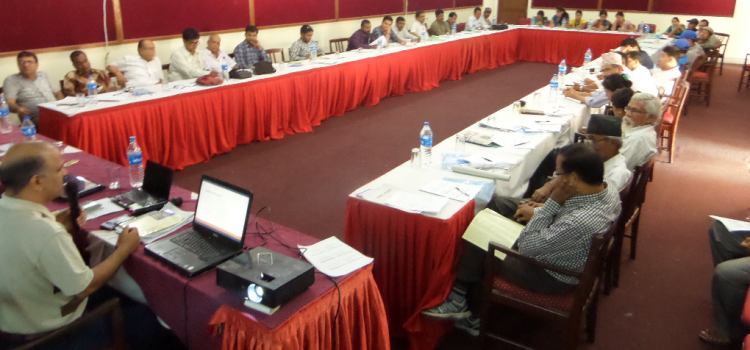In view of the growing threats- both professional and physical- on the working journalists, freedom1 Forum organized a dialogue among media owners and professional associations on developing protocol for journalists’ safety in Biratnagar, 30 July 2015.
At the dialogue gathering 49 persons including media owners, managers, editors, chiefs of the professional organizations of media, chairs of the women journalists and the indigenous journalists had active participation.
On the occasion, senior journalist and Chairperson of freedom1 Forum, Taranath Dahal, presented a working paper on ‘Role of Media Owners and Professional Organizations for Journalists’ Safety.’ With the presentation, he made the participants aware on indicators of the safety of journalists, stakeholders to make the journalists safe as state and political actors, civil society and academia, media and intermediaries, and UN and other intergovernmental bodies, and the challenges of professional and physical safety of journalists in Nepal.
According to him, the challenges of professional safety of Nepali journalists were- weak implementation of legal mechanism (Working journalist Act), no social security, no in-house policies for protection, no professional trade unionism and union, no in-house policy on pluralism, no gender sensitivity, no training on ethical professionalism, low level of awareness on rights and duty, and lack of common charter or protocol. He suggested for effective implementation of the Working Journalists’ Act with
- In-house human resource policies and guidelines
- Appointment
- Salaries/services/provident funds/retirement funds
- Insurance/compensation/treatments
- Training and skill development
- Welfare funds
- Union/Dialogues/Mediation
Similarly, in the level of policies and practices, the following were suggested:
- News room safety protocols
- Safety and security manuals and strategies
- Different reporting guidelines and training
- Specific measures on gender and cultural sensitivities
Moreover, Vice-President of the Federation of Nepali Journalists (FNJ), Anita Bindu, presented a working paper on how the women journalists could be made safe at the workplace. According to her, there were only 16 percent of women among the total journalists in Nepal. She complained that women were not made sources of news, and the women journalists were assigned only on women issues.
Citing the survey conducted by IFJ, she said 13.51 percent of women are sexually harassed at the workplace. Worryingly, 56 percent women journalists face such harassment by the male colleagues.
She suggested on creating women-friendly atmosphere at workplace. “All male colleagues need to change their perspectives on women journalists,” she underscored. For certain period of time, women could be provided reservation in journalism to attract them in this field.
On the occasion, some media owners said it could be difficult for the media houses in mofussil to have same guideline/directive as to the national/bid media houses. The media owners face hard times when the journalists leave the job all of a sudden. This trend discourages media owners to be liberal all the times, they complained.
Another participant, Binita Timalina, representing a media organization, said as the entire women folks were facing social insecurity, women journalists were bearing the brunt.
Voice was also raised that the FNJ needs to be impartial, and put an end to its double standard. The double standard of FNJ was detrimental to the safety of working journalists.
Coordinator at UNESCO Project of Increasing Safety of Journalists, Laxman Datt Pant, highlighted the journalists’ safety indicators developed by the UNESCO.

